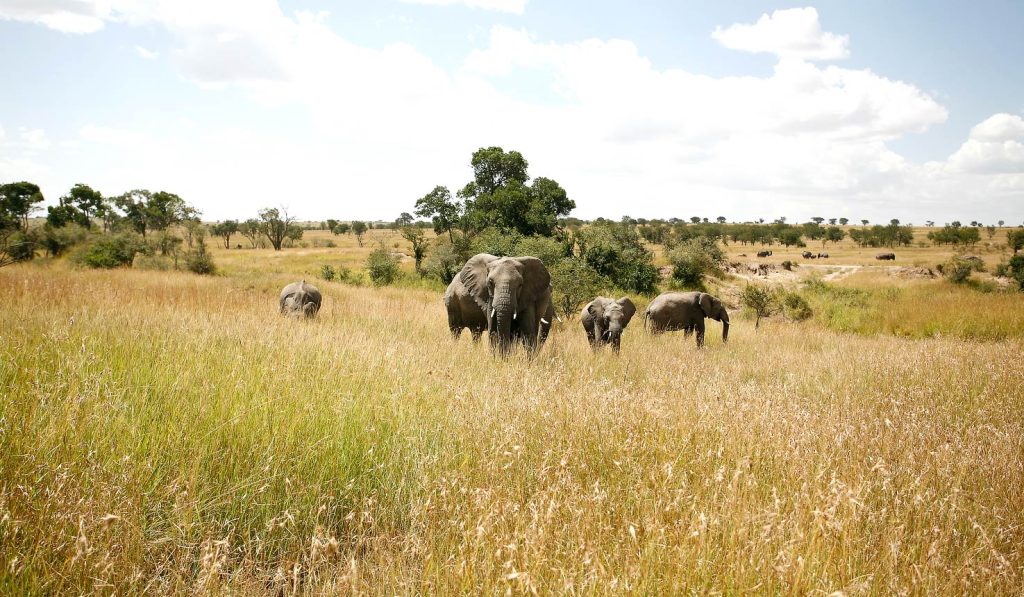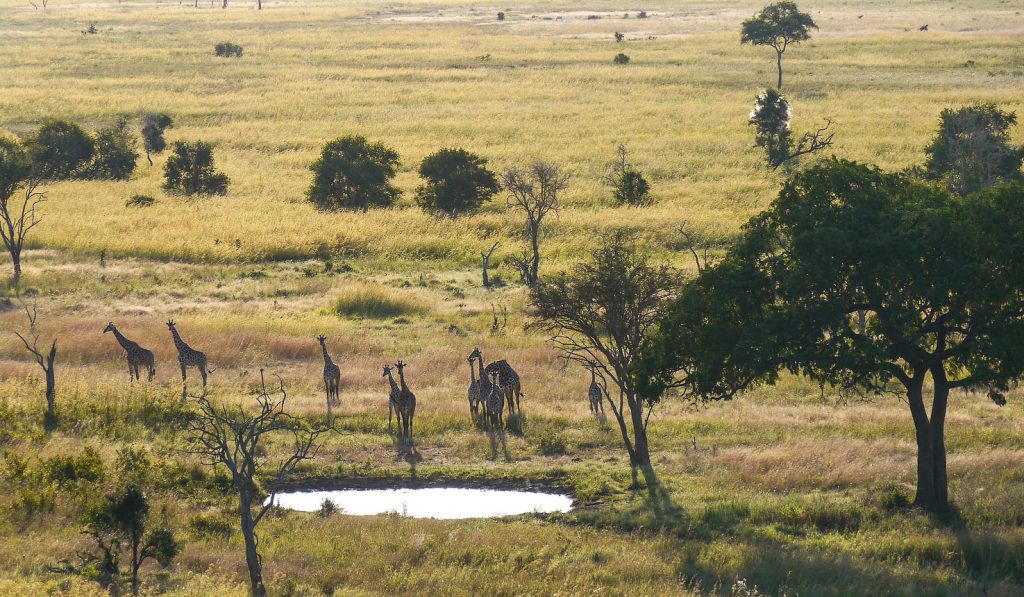The question isn’t whether Kenya and Tanzania deliver extraordinary safari experiences—they unequivocally do. The question is when to embark on your journey to witness the majesty of East Africa while enjoying the intimacy and exclusivity that defines truly luxurious travel.
After orchestrating hundreds of bespoke safaris across the Serengeti, Masai Mara, Ngorongoro Crater, and beyond, I’ve discovered that timing transforms a remarkable safari into an unforgettable one. Here’s your authoritative guide to selecting the perfect season for your East African adventure.
Understanding East Africa's Safari Seasons
Kenya and Tanzania experience three distinct safari seasons, each offering unique advantages for the discerning traveller.
Peak Season (July–October): The Classic Choice in Kenya and Tanzania
The period between July and October represents the pinnacle of East African safari conditions, characterised by dry weather and thinning vegetation that makes wildlife viewing exceptionally rewarding. During these months, animals congregate around limited water sources, creating spectacular viewing opportunities.
This is migration season at its most dramatic. In late July and August, the Great Wildebeest Migration reaches the Masai Mara, where massive herds cross the Mara River, creating one of nature’s most breathtaking spectacles.
The Trade-offs: Peak season brings higher accommodation rates and increased visitor numbers at popular destinations. While “crowded” remains relative in Africa’s vast wilderness, you may encounter other vehicles at prime wildlife sightings, particularly in the Masai Mara and around Ngorongoro Crater.
Best For: First-time safari-goers, migration enthusiasts, and travellers with fixed holiday schedules who prioritise optimal weather above all else.
Shoulder Season (January–March, June, November–Early December): The Connoisseur’s Secret
The period between early December and late March offers exceptional value, with significantly reduced rates outside the festive season. These shoulder months provide excellent value for money, with properties priced considerably lower than peak season.
June stands out as particularly magnificent—everything remains lush and green following the rains, temperatures are pleasant, and crowds haven’t yet materialised. Late June offers the possibility of witnessing the migration‘s early arrivals from Tanzania while enjoying greener landscapes and abundant wildlife.
The January–February window presents another compelling opportunity. During these months, the southern Serengeti hosts the Great Migration’s calving season, when thousands of wildebeest give birth, attracting dramatic predator activity from lions and hyenas.
Unexpected Advantages: Camps operate below capacity during shoulder season, creating opportunities for personalised service and occasional complimentary upgrades to private vehicles when guides and vehicles are available. The first two weeks of December offer exceptional value, with lush savannah following November rains and abundant baby animals creating enchanting viewing opportunities.
Best For: Experienced safari travellers, those seeking authentic wilderness experiences, photographers who appreciate dramatic skies, and travellers prioritising value without compromising experience.
Green Season (April–May, Late November): For the True Adventurer
The long rains arrive in April and May, typically manifesting as afternoon thundershowers with fine weather during morning game drives. This period delivers massively reduced rates and the rare privilege of having East Africa’s legendary parks largely to yourself, while game viewing remains good and often excellent.
During the wet season, landscapes transform into lush, dramatic backdrops perfect for photography, and birdwatching opportunities become exceptional as migratory species arrive.
Considerations: Some remote lodges close during April and May as heavy rains can make roads challenging. However, major parks like the Masai Mara and Serengeti remain accessible, and wildlife doesn’t disappear—it simply becomes more challenging to spot due to denser vegetation.
Best For: Budget-conscious travellers, birdwatching enthusiasts, adventure seekers who embrace unpredictability, and those who appreciate having iconic destinations virtually to themselves.

Strategic Timing for Specific Experiences
Witnessing the Great Migration in Kenya and Tanzania
For River Crossings: Visit early June for the dramatic Grumeti River crossings in western Serengeti, where swollen waters thick with crocodiles create spectacular natural drama. For Mara River crossings in Kenya, plan for late July through September.
For Calving Season: January and February in the southern Serengeti offer front-row seats to thousands of wildebeest births and the predator action that follows.
Avoiding Peak Crowds
Travelling during atypical months allows you to avoid game-viewing traffic jams and competition for space at wildlife sightings. Consider January, February, and March—the period between the two rainy seasons—when antelope calving season creates additional viewing opportunities.
Late May emerges as particularly appealing once the rains subside, as safari camps reopen with low-season pricing while landscapes remain beautifully green.
Combining Safari with Beach
Mid-June through late October provides ideal conditions for pairing safari with beach holidays, as the weather along Kenya’s south coast and Tanzanian islands like Zanzibar and Pemba remains stable, comfortable, and least humid.
Weather Patterns and What to Expect in Kenya and Tanzania
During the dry season from June to October, daytime temperatures average 23°C (73°F), reaching up to 28°C (82°F) in coastal areas. Occasional cold fronts can occur in July, with temperatures potentially dropping near freezing during early mornings.
The short rains in November and December typically appear as afternoon showers that rarely disrupt morning game drives. The long rains from March through April bring heavier rainfall but also create lush landscapes with fewer tourists.
Expert Recommendations by Traveler Profile
For First-Time Safari Travellers: July through September offers predictable weather, excellent game viewing, and the iconic migration experience. Book 6–9 months in advance to secure preferred accommodations.
For Luxury Experience Seekers: June or September–October provides the optimal balance—exceptional wildlife viewing, pleasant weather, fewer crowds than peak season, and better value that allows upgrades to more exclusive properties.
For Photographers: January–February for dramatic calving season action and stormy skies, or June for lush green landscapes with optimal lighting. The shoulder seasons offer superior photography opportunities without the harsh midday light of peak dry season.
For Budget-Conscious Travellers: The first two weeks of December deliver exceptional value with outstanding game viewing and widespread baby animals. April–May offers the deepest discounts for those comfortable with afternoon rains.
For Authentic Wilderness Experience: Late May, early June, or January–March, when fewer travellers are at lodges and on game drives, creates more time and space to appreciate wildlife in peace and engage meaningfully with guides and local people.
Practical Booking Considerations
Peak Season (July–October): Book 9–12 months in advance. Premium camps and lodges sell out quickly, especially during specific migration-viewing periods.
Shoulder Season: Book 4–6 months ahead for the best selection while still securing favourable rates.
Green Season: Book 2–3 months in advance. Last-minute deals often become available, though top-tier properties rarely discount significantly.

The Verdict: When Should You Visit Kenya and Tanzania?
The stretch between mid-June and late October represents the classic best time for Kenya and Tanzania safaris, offering optimal weather and thrilling game viewing. However, this conventional wisdom overlooks the extraordinary experiences available during the shoulder and green seasons.
Many safari veterans consider the shoulder seasons the optimal time for East African safaris, particularly for those who appreciate exceptional value and more intimate wildlife encounters. June and September–October stand out, offering greener landscapes, pleasant temperatures, fewer tourists, and excellent wildlife viewing.
The truth is that Kenya and Tanzania deliver world-class safari experiences year-round. As safari professionals often note, a mediocre day in the Masai Mara surpasses an exceptional day almost anywhere else. The best time to visit depends entirely on your priorities: guaranteed sunshine and migration spectacles, or exclusive experiences with dramatic landscapes and exceptional value?
For those seeking the pinnacle of luxurious safari experiences—where exclusivity matters as much as wildlife—I consistently recommend June or late September through early October. These shoulder periods deliver everything discerning travellers desire: spectacular game viewing, comfortable weather, and the intimate wilderness encounters that transform trips into once-in-a-lifetime journeys.
Plan Your Perfect East African Safari
Ready to experience the splendour of Kenya and Tanzania during the ideal season for your preferences? Our expert safari consultants design bespoke itineraries that align your travel dates with your unique interests, from migration river crossings to exclusive lodge experiences and everything in between.
Contact us today to begin planning your unforgettable East African adventure.

